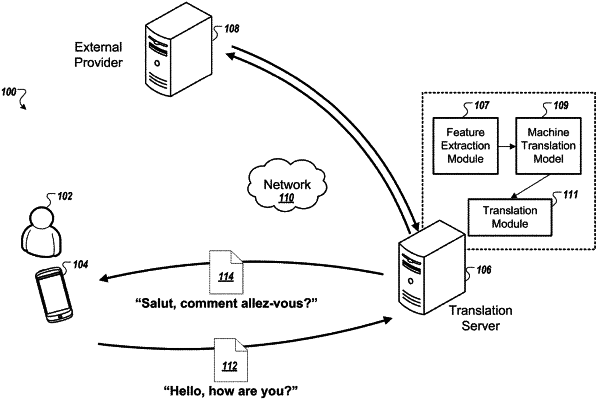| CPC G06F 40/58 (2020.01) [G06N 3/08 (2013.01)] | 20 Claims |

|
1. A computer-implemented method for performing machine translation of text from a first language to a second language, the method comprising:
generating, by one or more processors, a set of encoding vectors from a series of feature vectors representing characteristics of a text segment in the first language, by processing the feature vectors with an encoder neural network comprising a set of bidirectional recurrent neural network layers, each encoding vector of the set having a predetermined number of values;
generating, by the one or more processors, multiple context vectors for each encoding vector based on multiple sets of parameters, the multiple sets of parameters being respectively used to generate the context vectors from different subsets of each encoding vector;
generating, by the one or more processors, a sequence of output vectors using a decoder neural network that receives the context vectors, the decoder neural network comprising a recurrent neural network, the output vectors representing distributions over language elements of the second language; and
determining, by the one or more processors, a translation of the text segment into the second language based on the sequence of output vectors.
|